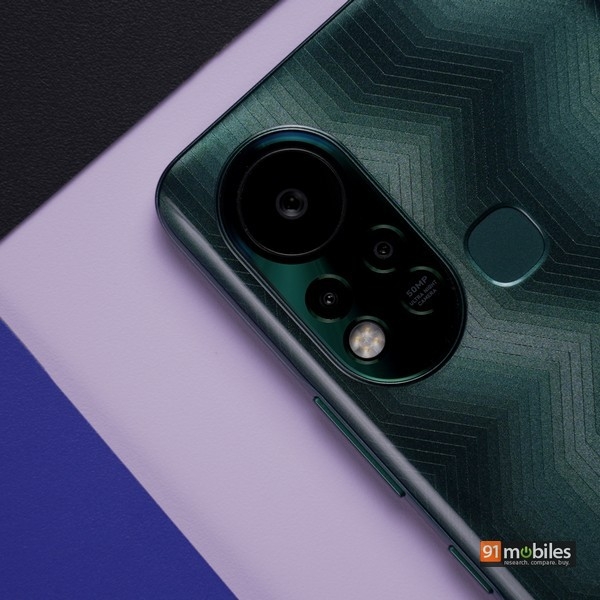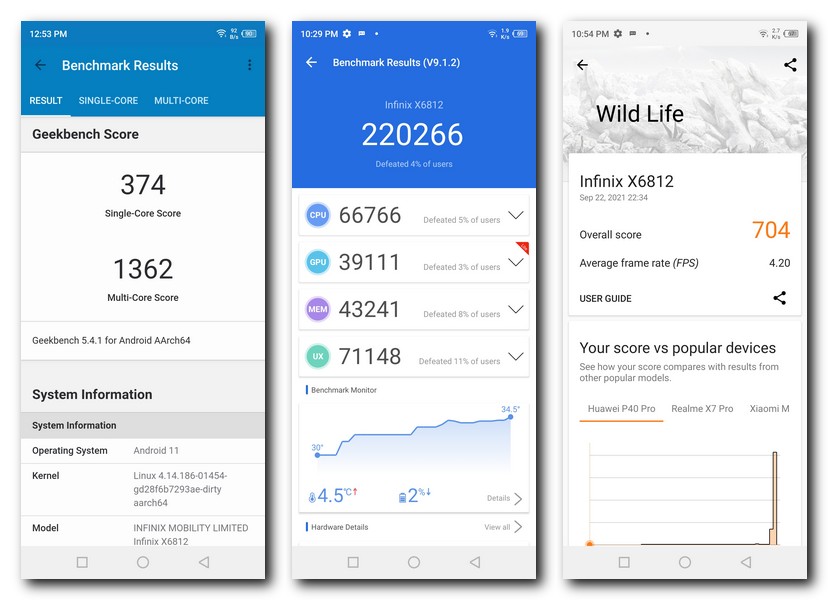Infinix has just come up with a new budget device to compete against arch-rivals Realme and Xiaomi. The Hot 11S is a rather enticing option seeing the specs it has on offer and its starting price of Rs 10,999. Let’s see how well the device holds up to more in-depth scrutiny of its services.

Verdict
The Infinix Hot 11S appears as a cheaper version of the Xiaomi Redmi 10 Prime (review) but with a more cluttered UI and a smaller battery. The performance is decent, and so are cameras (in terms of daylight photography) and battery life, but the software experience does leave a bit to be desired.
The lowdown

Infinix is still quite keen on implementing its gradient design style over a standard plastic unibody chassis. The huge primary camera lens is quite prominently visible on the back, below which sit two other sensors. Infinix is one of the last major OEMs to not make a switch to the more user-friendly power button and fingerprint integration on the side and instead opts for the old-fashioned capacitive sensor on the back. The device’s weight distribution seems apt and a narrow frame provides an easy grip. There is a USB C port at the bottom, which is a welcome change, while a single speaker unit and a 3.5mm headphone jack sit beside it. The Infinix Hot 11S is by no means a one-hand device, thanks to its humungous 6.8-inch LCD panel on the front that has FHD+ resolution. There is also a 90Hz refresh rate option. The panel has a blue tinge to it which looks slightly unappealing, and the brightness levels are also quite nominal. Overall the viewing experience, even with WideVine L1 certification for HD OTT content, does leave one wanting for more.

As for the optics, you get the 50MP primary lens also seen on the Redmi 10 Prime, while the secondary and tertiary sensors facilitate nothing more than camera padding. Daylight shots are sharp in detail and showcase punchy colours that should work for social media usage. Exposure calibration is not very good in low-light situations and the dedicated Night mode takes very long in post-processing. Portrait mode photos have a nice background blur although details on the subject are oversharpened a lot. On the front is an 8MP selfie shooter that takes passable shots at best.
The chipset underneath doing all the heavy lifting is MediaTek’s recent Helio G88 SoC which also found its way onto the Redmi 10 Prime earlier last month. I did a benchmarks comparison with the G88 versus the G85 which you can read here. The gist is that the Infinix Hot 11S is not doing a tremendously better job than lower-priced phones such as the Narzo 30a (review) in terms of tangible performance metrics.

Real-world usage scenarios show that the Hot 11S accomplishes usual smartphone tasks such as app switching, multi-tasking, and more with relative ease. The 4GB of RAM keeps background tasks open and the 64GB of internal storage is expandable to 256GB. I do feel that Infinix’s bloatware-laden HiOS is not extremely user-friendly. There is a 5,000mAh battery present which supports 18W fast charging. You can expect the device to last a full day on normal usage.
Final verdict

The Infinix Hot 11S brings in almost the same specs as the Redmi 10 Prime but has to contend with a smaller battery. Then there is also the fact that Infinix has not been very consistent with its software updates and its UI could do with an overhaul. Users who are on a budget looking for reliable performance can consider the Hot 11S, but otherwise, the Redmi 10 Prime would make a better choice.
Editor’s rating: 3.5 / 5
Pros
- Robust design
- Decent performance
- Good battery life
Cons
- Not so great software experience
- Low light shots could be improved
The post Infinix Hot 11S review: the budget performance package first appeared on 91mobiles.com.
via ©91 Mobiles









No comments:
Post a Comment